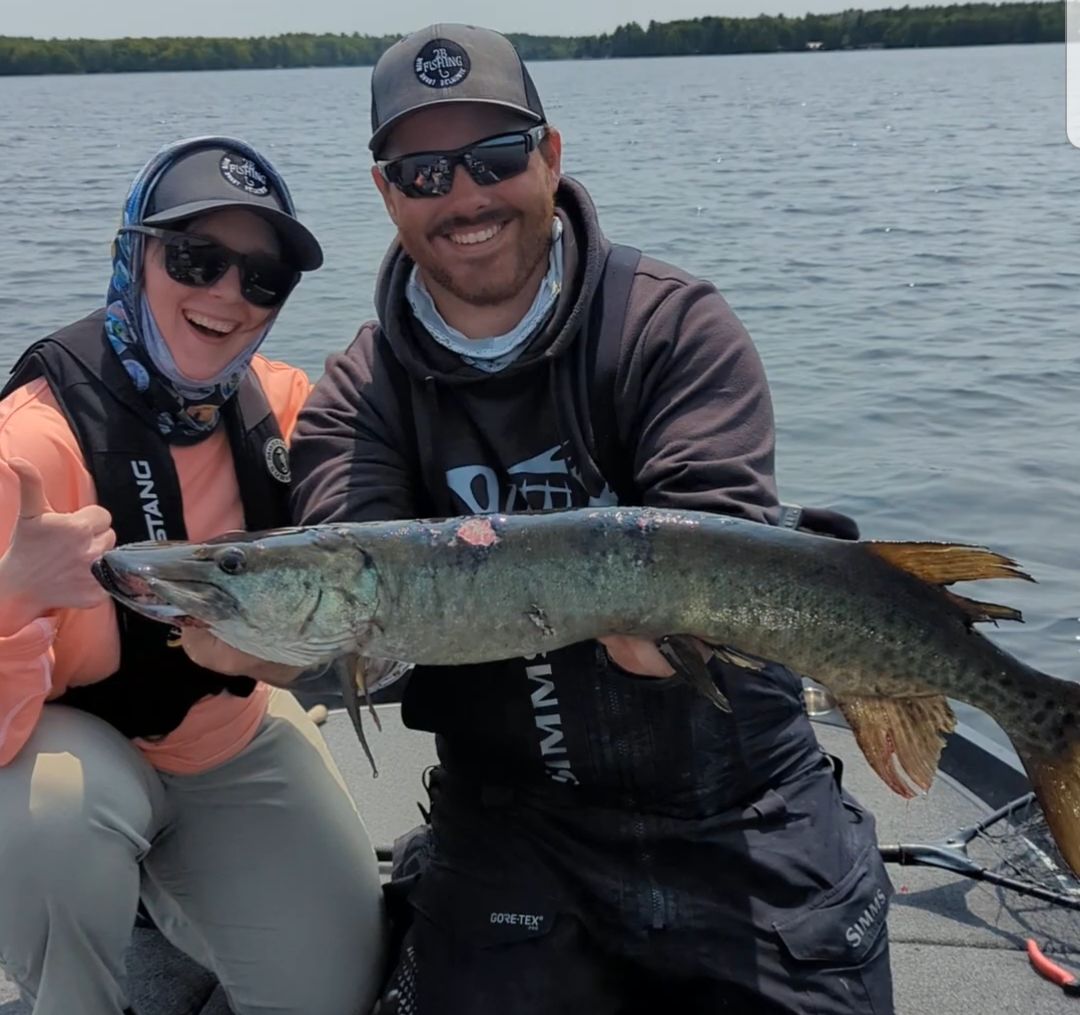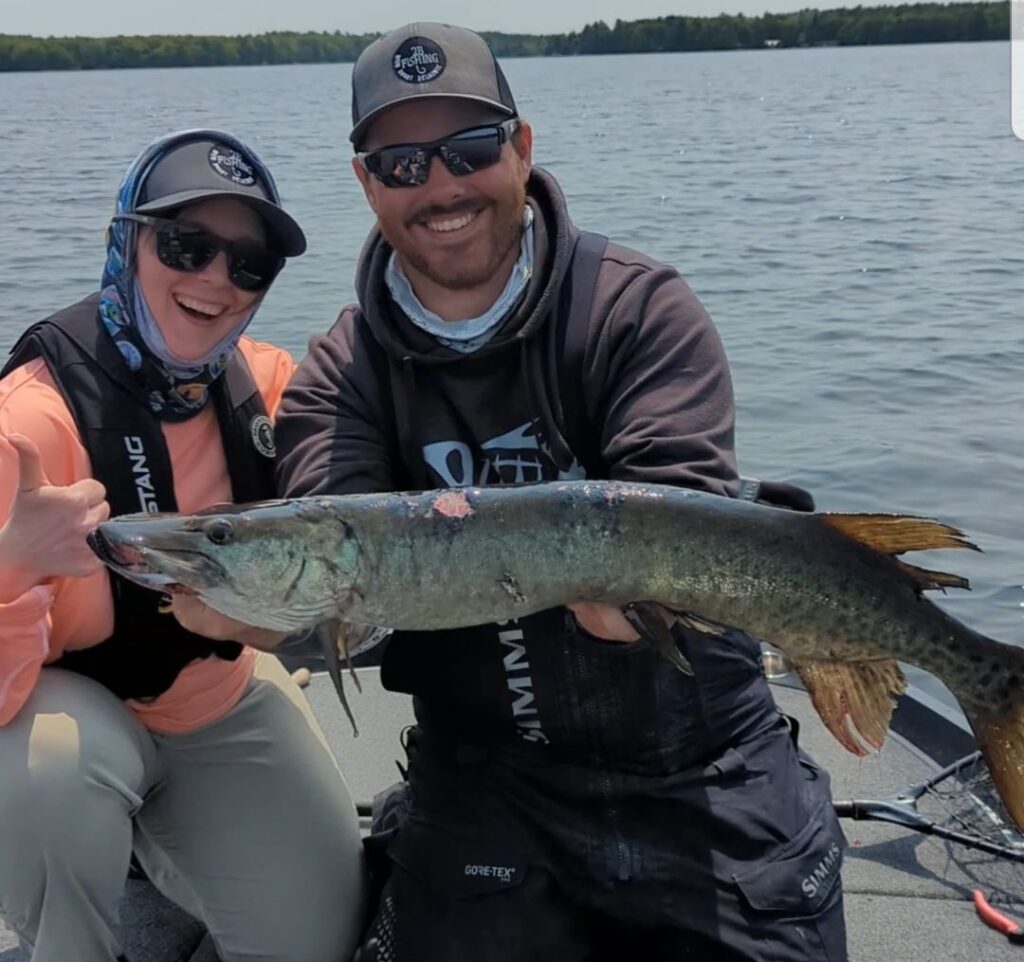
It’s Muskie season in the Kawartha Lakes! Whenever I discuss Kawartha Muskies I like to divide them into two different categories: 1. Shallow Grass Lake fish, muskies inhabiting lakes like Sturgeon, Scugog, Chemong, etc. which are relatively shallower bodies of water and consist primarily of weedy flats and mud bottom basins. Followed by 2. Canadian Shield Muskies, which are inhabiting lakes that have a lot deeper depths and also have a lot more rock structure than lakes further south which tend to have more weeds (Balsam, Buckhorn, Stoney, etc.) . The muskies behave differently depending on the body of water you are fishing. The grass lakes warm quicker due to the shallower depths and heavy amounts of vegetation; therefore the muskies are going to typically spawn earlier on these fisheries as opposed to the Canadian Shield Muskies which spawn later in the spring. After the fish spawn, they enter a post spawn state where they usually will head out to deeper water and recover from the stresses of spawning. The fish are very lethargic and chasing and eating things is one of the last things on their minds. The post spawn time frame can vary from fish to fish and can last up to a few weeks. During the post spawn, it can be one of the most difficult times to run into active muskies. Therefore around opener every season in zone 17 it can be beneficial to start fishing the shallower grassy lakes over the Canadian Shield bodies of water in hopes to find more aggressive and active fish that are finished spawning.
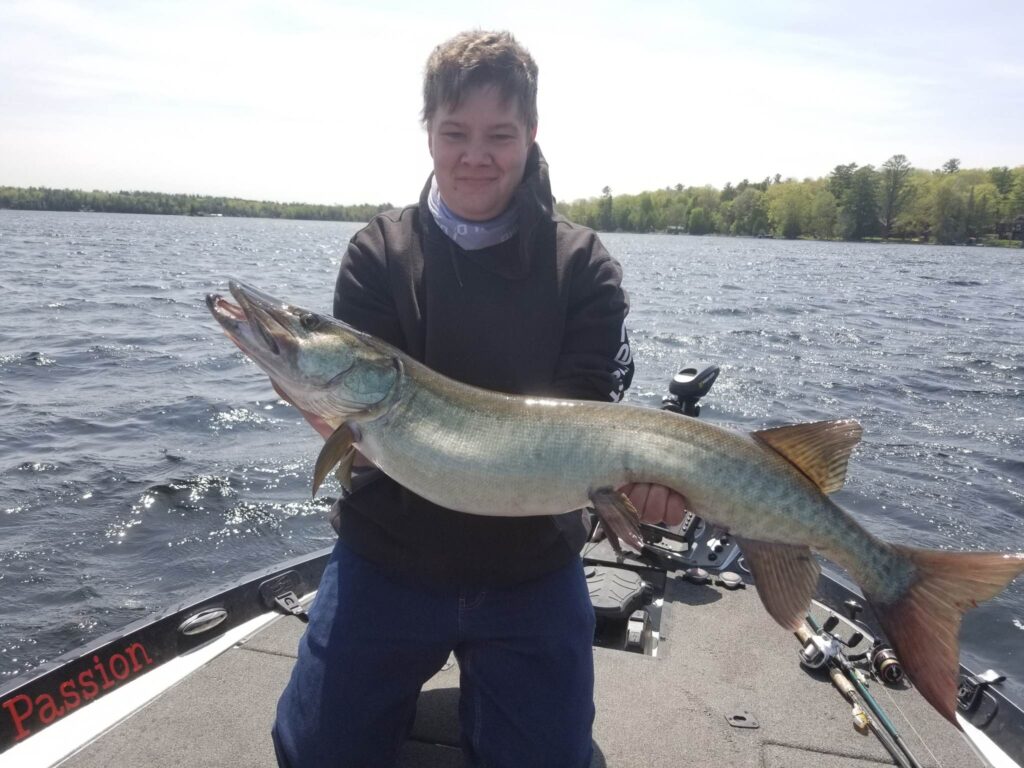
When locating the fish this time of year, regardless of what body of water you are fishing, focus on areas that are close to areas you think the Muskies spawned in. During the post spawn phase and even following the post spawn; these fish will not have moved far from the shallow bays and weeds that they used during spawning season. Typically these areas will have all signs of other species living in them as well this time of year (Bass, bluegills, crappies, etc.). When choosing lures, for early season muskies the trend is to choose baits that are typically more on the smaller side as opposed to larger baits of the same type. I think it’s more important to try to match a certain kind of forage and match its size accordingly. For example, if you are in an area where the muskies are typically eating small bass and bluegills on shallow weedy flats , something like a small 6-7 inch bait may be ideal. However if you’re in an area where the muskies are feeding on larger sized perch or small walleyes something 10-13 inches may be more suitable for that situation. The main thing is fish lures that you have confidence with. This can be a tricky time of year to get muskies in the boat especially if the conditions are not ideal; and having a lure in your hand that brings you confidence and keeps you alert and engaged for those few shots you get an outing is super important.
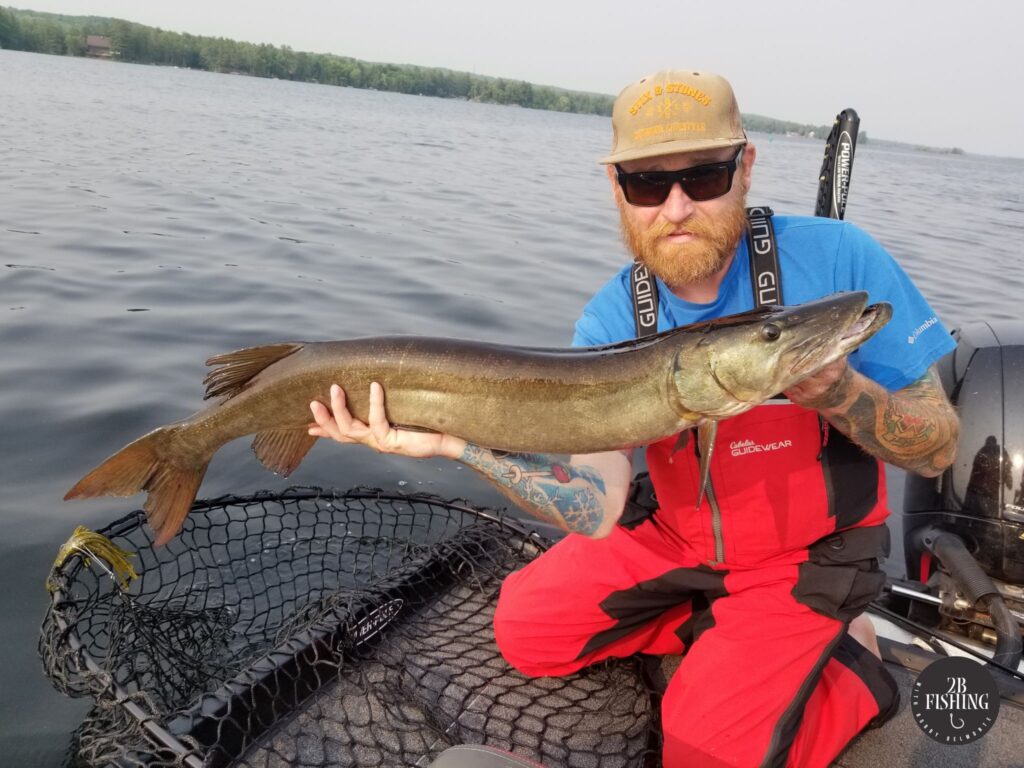
So far this season there has been a few key baits that have excelled for myself and my clients. Firstly a Waterwolf Lures 9″ Gator Tube is a bait that is overlooked by some for early season Muskies but it puts fish in the boat all season long. The great thing about it; there is no wrong way to fish it. Pull and pause, slow straight retrieve, large sweeps; all retrievals can be effective in different situations when fishing a tube for muskies. A pull pause technique has been deadly this season so far with the lower than usual water temps. Having the tube glide along a foot or two below the surface with a few seconds pause in between pulls seems to be the most effective way to fish it so far this season. When you pause the bait it will sink but using a shallow tube rig allows the tube to glide towards the bottom slowly as opposed to an aggressive faster drop. Most of the time, this is when you are going to get a bite, as that tube slowly glides downward in front of a following fish.
The other bait that has produced so far this season is a new lure by Daiwa and Nishine Lure Works, The Bessie. The lure comes in three styles; floating, slow-sinking and fast-sinking. The floating model operates like a topwater prop bait. Twin propellers rotating while retrieved, creating a disturbance and wake along the surface of the water along with a blade on the belly of the bait that clanks back and forth and creates an extra sound and vibration for the lure. It also has a very distinct and realistic rocking motion which while retrieved, mimics an injured baitfish. The two sinking models however are much more unique when it comes to the world of Muskie baits. They are essentially over-sized, spybaits with stronger, larger components. Spybaiting is a finesse technique from Japan originally designed for bass fishing that has grown in popularity over the past few years and has become a staple in any serious bass anglers tackle collection. The bait will sink slowly or quickly through the water column, props rotating creating a vibration and the body will shimmy like a injured bait fish just like the floating model. However using the sinking models allows you to display this highly effective presentation at a variety of deeper depths for more reluctant to bite fish. The sinking models are also equipped with a blade on the belly however after some time experimenting with the bait I find taking the blade off for a more quiet, subtle approach is the way to go for more pressured fish and will get you more follows and bites. Some of the equipment used so far this season can be found below:
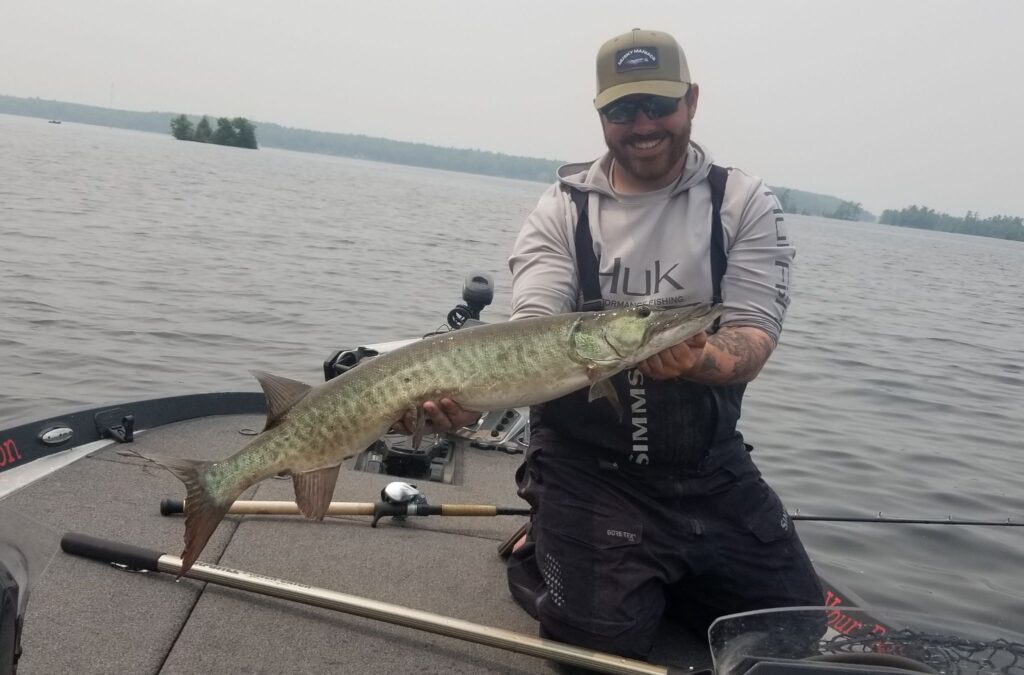
Rod – 9’6″ XH Daiwa Prorex (cork handle)
Reel – Shimano TranX 401 HG (7.1:1)
Line – 100lb Power Pro Braid
Leader- 18″ Huskie Muskie fluorocarbon leader
Bait – Waterwolf Lures 9″ Gator Tube (Shallow Casting Model) / Daiwa Bessie (Slow-Sink Model)
